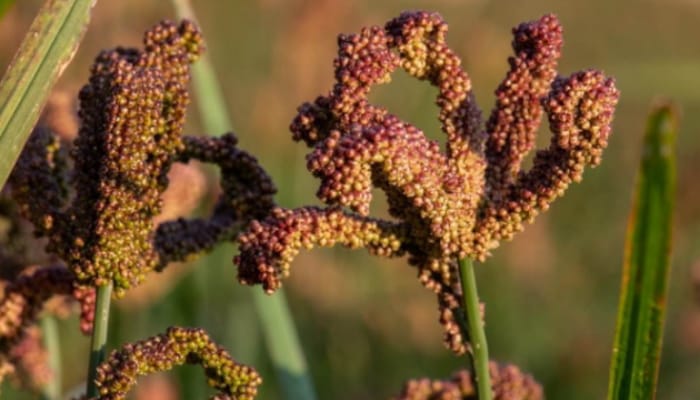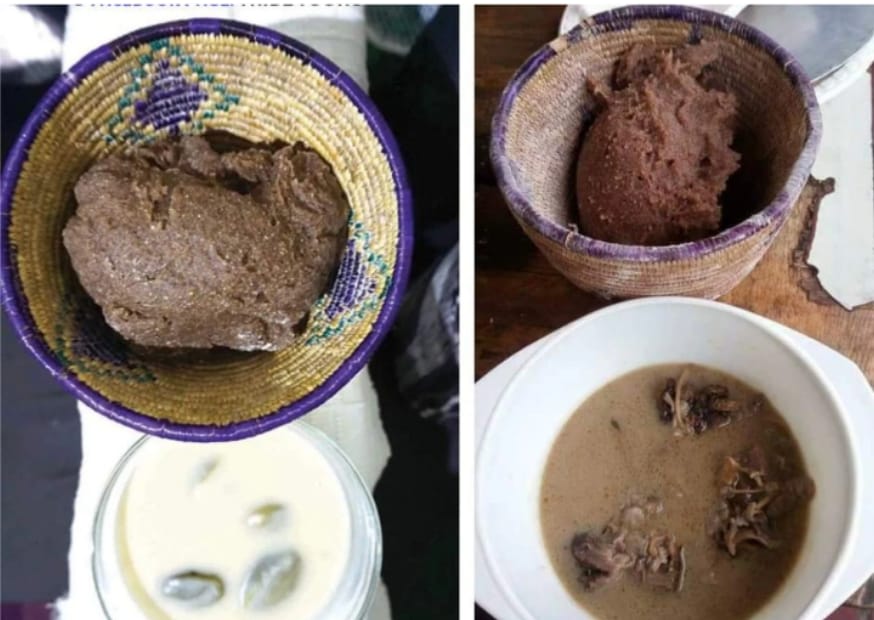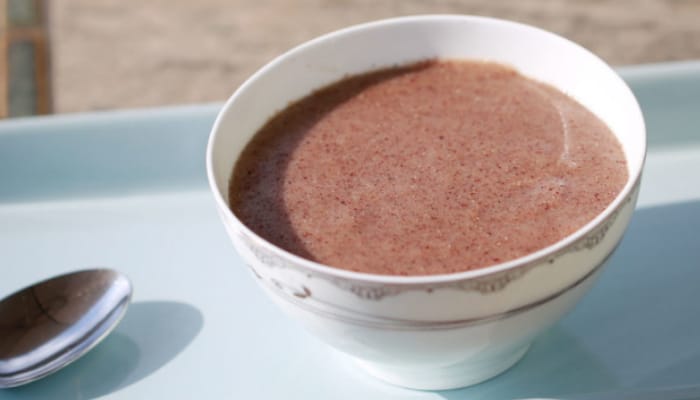
By Justine Nuwamanya
Millet bread is commonly known as Kalo among the Baganda in the central region, Akaro/oburo in Western/South Western Uganda, Kwon Kal in the Northern region, and atap in Eastern Uganda. It is a delicious meal that is enjoyed by many Ugandans especially when served with a light sauce like meat or fish. It is a product of finger millet flour.
Finger millet has been widely grown as a subsistence crop in Uganda usually for family consumption and the excess is sold. Currently, many people are growing it on a large scale for commercial purposes. The growing of finger millet involves clearing the land one month before sowing the seeds which is done by hand using the broadcasting method. Weeding is carried out twice within the growth period and after four months the millet yield is ready for harvesting.

Harvesting finger millet is usually done while the grains are not yet dry and it`s a collective activity that requires everyone`s involvement; family members, neighbors, and sometimes the community members. From personal experience, each time harvesting of millet found me on holiday in Rukungiri district (my mother’s village), I vividly remember our aunties -coming from afar- and friends from the community joining us for the harvest. It was always a full party and food was always prepared and served on the harvesting grounds.
After harvesting, the millet is always dried under the sun, and in the evenings, it is kept in the granary or a dry room for those who have no granaries to keep away pests. This is usually followed up with pounding, winnowing, and then grinding. Grinding is done either by using a local stone called orubengo or taken to the mill to get fine millet flour.
It is this fine millet flour that is used to make the millet bread. This process involves mixing millet flour with cassava flour, boiling water, and then mingling the mixture in either a saucepan or pot. The millet bread is served in small baskets called ‘endiiro’ with a sauce of your choice.

Personally, I love millet bread with beef soup or pasted beef (beef mixed with groundnuts). Millet flour can also be consumed as porridge among other things. Personally, it is my go-to porridge. It is also used to make cakes and pancakes.

Besides its health benefits that include richness in calcium, millet bread is a meal that is part of most celebration food menus for example weddings, baptisms, and graduations. In some Ugandan cultures especially in Western and Northern Uganda, it is used as a measure of one’s readiness to be a wife and feed the family.
Generally, Millet is so Ugandan and it keeps everyone who enjoys it alert, alive, awake, and enthusiastic. You should try it out someday if you have never, and if you are a visitor, ask for it the next time you visit Uganda. You shall be glad you did.
When I think of food that unites Uganda, it is millet bread!!!
Image source: Google
–
Justine Nuwamanya is a blogger, philanthropist, and a Business Administration graduate who is committed to helping people and systems perform better. She enjoys reading, photography, listening to music, watching soccer, and rugby. Link to her blog
Great post hun xx I love millet porridge
Thank you. Justyn nailed this post. I too love millet porridge. Try adding lemon juice or peanut butter if you don`t do it already and you will thank me later…..😂😂
Your point of view caught my eye and was very interesting. Thanks. I have a question for you.
Can you be more specific about the content of your article? After reading it, I still have some doubts. Hope you can help me.